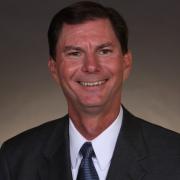The world has been upside down for a year now. Life is creeping back to a semblance of normal, but there are challenges in reopening—which affects the manner in which retirement professionals can contact educators. A panel of experts at a session of the NTSA Winter Virtual conference offered their ideas on meeting those challenges regarding expansion of retirement plan coverage in the education community.
Session facilitator Mark Turner, Vice President and Western Division Manager of Security Benefit, at the opening of “2020 Reopening Challenges & How They Have Framed the New Normal for Retirement Planning,” noted that schools are slowly moving to a more traditional manner of instruction. He cited the Burbio K-12 School Opening Tracker’s data that shows that the recent trends regarding the percentage of students receiving instruction virtually, through a hybrid model, or in a school are as follows:
| Measure | Feb. 7-13 | Feb. 14-20 | Feb. 21-27 |
| Virtual School | 35.2% | 33.6% | 31.1% |
| Hybrid Model | 25.1% | 25.6% | 26.3% |
| Traditional School | 39.7% | 40.8% | 42.6% |
 Reopening depends on the area and what local district policy is, said David Lewis, Executive Director for the Association of School Business Officials
Reopening depends on the area and what local district policy is, said David Lewis, Executive Director for the Association of School Business Officials International. Kimberley Adams, Director of Affiliate Relations with National Education Association Member Benefits, concurred that pandemic restrictions still remain.
International. Kimberley Adams, Director of Affiliate Relations with National Education Association Member Benefits, concurred that pandemic restrictions still remain.
Adams noted that the restrictions are “very much a barrier to doing business in the ways that we had been doing business” and observed that “the opportunities communication platforms offer are great, but still not optimized”; not only that, people are suffering from “Zoom fatigue.” Advisors must build on established relationships, she remarked, adding that she hopes to see “more and more individuals participating in retirement plans.” Being safe is important to teachers, she said, and noted that pandemic restrictions are still “very much a barrier to doing business in the ways that we had been doing business.”
 Adams observed that “the opportunities communication platforms offer are great, but still not optimized”; not only that, people are suffering from “Zoom fatigue.” Jody Detillier, owner and CEO of Detillier Financial Advisors, LLC, said that his business has been “evolving into a different mode of operation,” and described a more positive experience in using technology to meet the challenges of our unique time. He reported that he has produced a video with the superintendent of a school district.
Adams observed that “the opportunities communication platforms offer are great, but still not optimized”; not only that, people are suffering from “Zoom fatigue.” Jody Detillier, owner and CEO of Detillier Financial Advisors, LLC, said that his business has been “evolving into a different mode of operation,” and described a more positive experience in using technology to meet the challenges of our unique time. He reported that he has produced a video with the superintendent of a school district.
The video addresses financial literacy in the context of all employees and employees nearing retirement. The topics it addresses are as follows:
| Video Topics for all Employees | Video Topics for Employees Nearing Retirement |
| Basics of TRSL (the Teachers Retirement System of Louisiana) | What is a DROP? (Deferred Retirement Option Plan) |
| What is a 403(b)? | Things to consider when entering DROP |
| What is a 457(b)? | You finished DROP…now what? |
| 403(b) vs. 457(b) | What is ILSB? (Initial Lump-Sum Benefit) |
| Pre-tax vs. Roth contributions | DROP vs. ILSB |
| The benefits of starting to save early for retirement | Test drive your retirement |
| Common investing mistakes | How TRSL can affect your Social Security |
| Investing your pay raise | |
| Options with your old 401(k) |
Detillier reported that the videos have had a positive result. He said that although it is “very hard to get administrators to sit and watch videos,” they have “been taking advantage of every opportunity to use them,” and said that they are well-received.
Best Practices
“We’re going to have to remain vigilant over the next couple of years—this isn’t just going to go away,” said Lewis.
“You need someone to open doors,” said Adams. Such individuals, she said, help in making introductions; and once that is done, she added, good relationship skills come into play.
Stay active, suggested Detillier, adding that one should “get in front of people”—whether it’s virtually or in person.
It is “important that you deliver value” and “show that you are meeting a member need and make a member feel comfortable,” said Adams. “It is our responsibility to being retirement education to education professionals.”
- Log in to post comments
